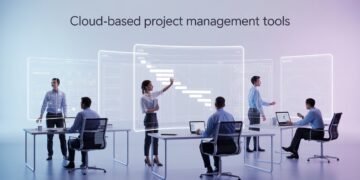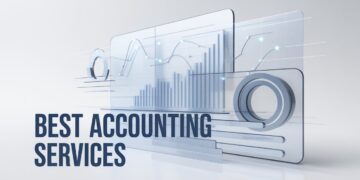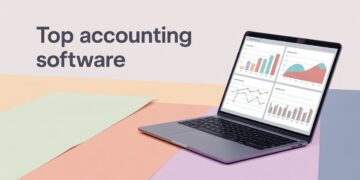The way we work has shifted permanently. For decades, office-based businesses dominated the professional world. Then remote work surged, first as a flexible perk, and later as a necessity during global disruptions. Now, more companies are realizing that building a remote-first business model is not just a reaction to change it’s a strategic move for growth, resilience, and innovation.
Unlike remote-friendly setups, where remote is allowed but office remains central, a remote-first strategy is designed from the ground up to support distributed teams. Every process, tool, and policy is structured with the assumption that people may be working from anywhere. This mindset shift makes all the difference in creating a business model that thrives in today’s digital economy.
Why Choose a Remote-First Business Model?
A remote-first company gains advantages that go far beyond cost savings. Leaders adopting this approach often cite several key benefits:
-
Access to global talent: Businesses are no longer limited to local hiring pools. The best person for the role may live in another country, and with the right systems, location doesn’t matter.
-
Reduced operational costs: Office leases, utilities, and overhead can be significantly lowered, freeing resources for growth and innovation.
-
Employee satisfaction and retention: Flexibility is now one of the most valued perks. Teams that can balance life and work are often more engaged and loyal.
-
Business resilience: A distributed model makes a company less vulnerable to disruptions such as natural disasters, political events, or sudden global crises.
This isn’t just about remote work it’s about building a resilient, scalable business structure.
Anticipating Challenges in a Remote-First Strategy
While the advantages are clear, leaders must also prepare for the unique challenges of a remote-first business model:
-
Communication gaps: Without intentional planning, messages get lost in endless chats or overlooked emails.
-
Culture building: It takes effort to create a sense of belonging without face-to-face interactions.
-
Compliance and security: Handling sensitive data across borders requires strong cybersecurity and legal awareness.
-
Time-zone hurdles: Distributed teams may face delays in decision-making when working across multiple regions.
Recognizing these obstacles early makes it easier to design systems that overcome them.
Foundations of a Remote-First Company
At the core of any successful remote-first business model are a few essential building blocks:
Digital Infrastructure
Remote-first companies rely heavily on digital tools. Cloud-based file storage, project management platforms, and real-time communication apps form the backbone of operations. The goal is to make information accessible to everyone, regardless of location.
Hiring and Onboarding Remotely
Recruiting globally means adapting hiring processes. Clear job descriptions, structured interviews, and digital onboarding programs ensure new hires feel connected and prepared from day one.
Asynchronous Communication
One of the defining traits of remote-first strategy is async communication. Instead of expecting instant responses, companies document processes and encourage thoughtful, flexible collaboration that works across time zones.
Building a Remote-First Culture
Culture is often the hardest part to get right. A remote-first culture prioritizes trust, autonomy, and accountability. Some strategies include:
-
Transparency by default: Document decisions and make them accessible to all.
-
Regular check-ins: Weekly or biweekly video calls to maintain human connection.
-
Celebrating wins: Recognize achievements through company-wide channels.
-
Virtual team-building: Activities like online games, shared workshops, or casual coffee chats can strengthen bonds.
When culture is intentional, distance doesn’t stop people from feeling like they’re part of something meaningful.
Policies and Structures That Support Remote Work
To sustain long-term success, businesses need clear policies that address how remote-first work happens:
-
Flexibility in schedules: Instead of rigid hours, focus on outcomes.
-
Performance measurement: Set clear goals and use measurable results to track productivity.
-
Wellness and balance: Encourage breaks, healthy workspaces, and boundaries between work and personal life.
-
Clear escalation paths: Define how employees can raise issues, ask questions, and receive support without delay.
These frameworks reduce confusion and create consistency across the organization.
Scaling a Remote-First Business
Once the basics are in place, scaling becomes the next step. Growing a remote-first company requires additional considerations:
-
Global expansion: Hiring in multiple countries requires knowledge of local labor laws and tax obligations.
-
Leadership adaptation: Managers must learn to lead with empathy, clarity, and trust rather than micromanagement.
-
Cultural inclusivity: With teams spread worldwide, embracing diversity and ensuring everyone feels valued is crucial.
-
Continuous improvement: Remote-first strategy is not static companies must evolve their systems as technology and team needs change.
A well-designed remote-first business model grows stronger as it scales, rather than more complicated.
The Future of Remote-First Businesses
Remote-first is more than a workplace trend. It represents a shift in how organizations are structured, how they grow, and how they compete. Businesses that embrace this model are better positioned to attract talent, withstand global challenges, and operate efficiently across borders.
As more industries adopt remote-first strategies, it will become the norm rather than the exception. Leaders who move early will not only keep up with change but set the pace for the future of work.
Conclusion
Building a remote-first business model requires more than just allowing employees to work from home. It means designing systems, policies, and culture that assume work can be done anywhere and thrive because of it. From digital infrastructure to culture building and scaling strategies, every step strengthens the company’s ability to succeed in a global, digital-first economy.









